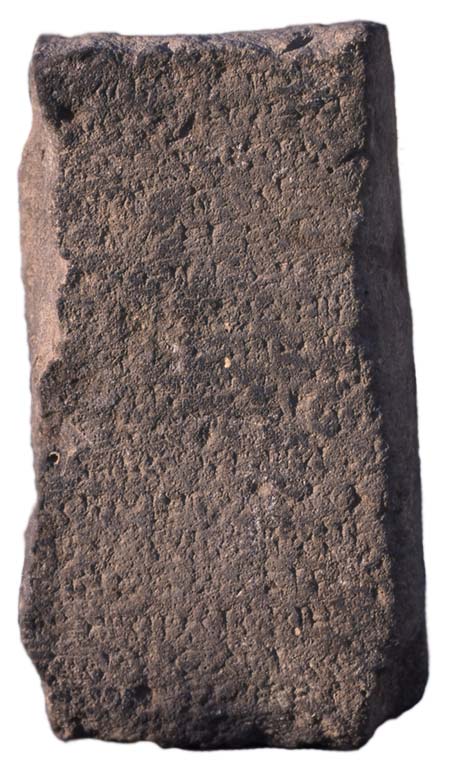Fragment of stela of Shalmaneser III
In 1999 we retrieved two stela fragments inscribed with Neo-Assyrian cuneiform text and lying in the garden of a house just north of the Sajour. According to the owner the fragments, which are now in the Aleppo Museum, were found in the Sajour river just below the site, and they seem virtually certain to derive from there. The fragments are both of dark grey basalt and have traces of inscription on opposite flat surfaces, which shows that they come from a free-standing monument. The larger piece A, shown here, is 46 cm high and 27 cm wide, and preserves portions of an inscription of Shalmaneser III, very similar to the version of his annals known from clay tablets found in Assur, and written in 842 B.C. (Grayson 1996, A.0.102.6). The obverse has the end parts of 19 lines, and the reverse the beginnings of 18 lines. The obverse covers a bit of the introduction and part of the Zagros campaign of the accession year (= col. i, ll. 23-41 in A.0102.6), while the reverse begins with the western campaign of his 10th regnal year (849 B.C.) and continues into the campaign against Hama in the 11th year. The smaller piece B, which measures ca. 30 x 30 cm max., is a theoretical join to A, and its obverse contains parts of 9 lines matching lines on A (= col. i, 30-38 in A.0.102.6). Compared with the Assur text the gap at beginning of our inscription corresponds to 22 lines, and that between text on obv. and rev. to some 80 lines, so that most of the stela is clearly missing. Since also we do not know what account may have followed the pure annalistic passages, or indeed how the inscription was organised on the stela, all that can be said is that quite likely the text was edited close to 842 B.C.
Grayson, A. K., 1996; Assyrian Rulers of the Early First Millennium BC II. RIMA 3. Toronto: University of Toronto Press.
« Go back
